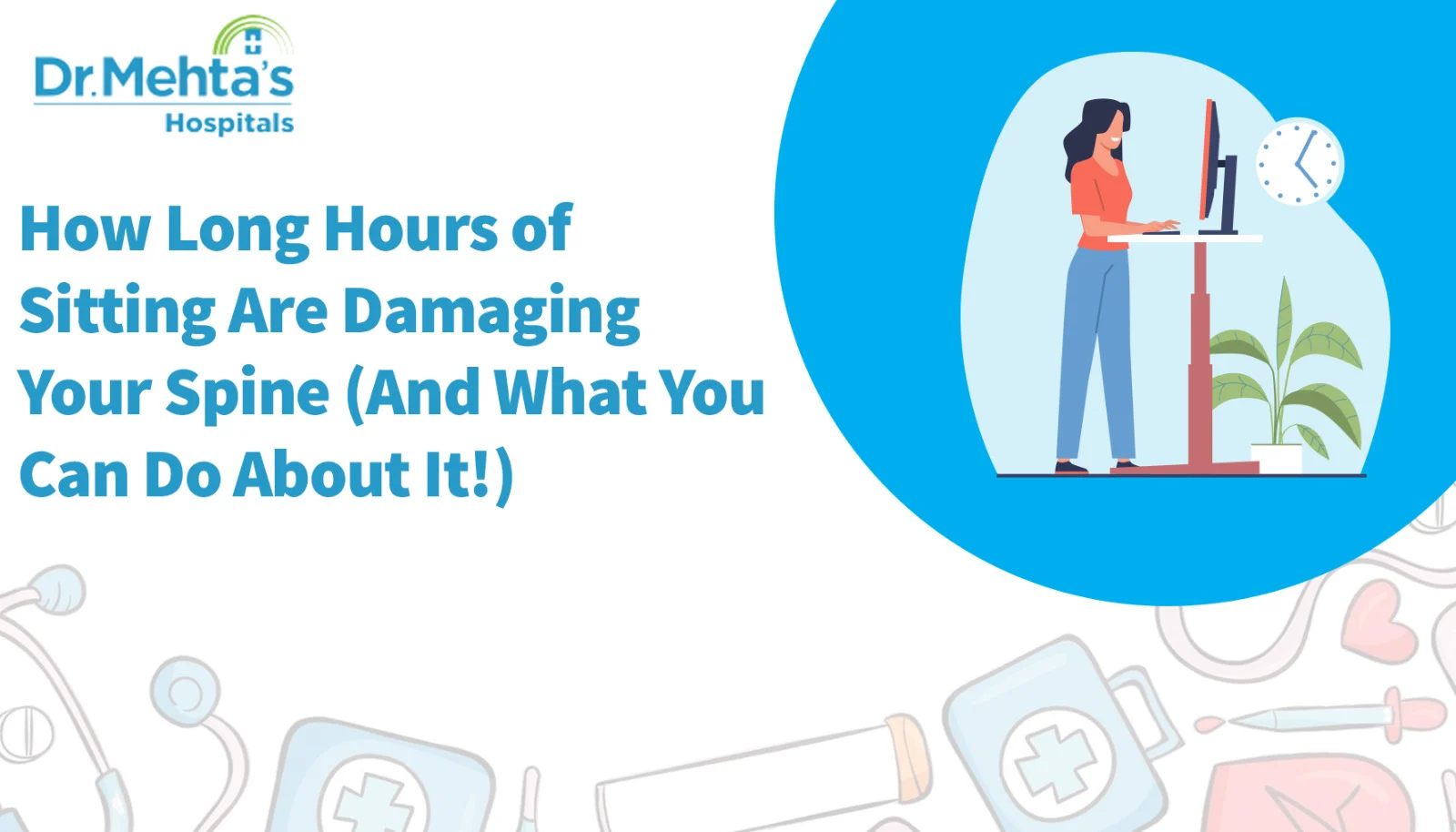Table of Contents

Spending long hours at our screens has quietly changed the way we use our bodies. While it may feel comfortable, sitting for extended hours puts constant pressure on the spine and the muscles that support it. Over time, long sitting hours reduce spinal strength, flexibility, and posture. The good news is that these effects can be reversed with awareness, daily mobility, and guidance from orthopedic specialists.
When you sit for long periods, most of your body weight shifts to the lower back and neck.The natural S-curve of the spine starts to flatten, and thus, the muscles that hold it in position become weakened. Reduced circulation limits the supply of nutrients to the spinal discs.
According to the best orthopedic doctors in Chetpet, sitting continuously may result in stiffness, slight pains, and in some situations, compression of nerves. In fact, over 65% of India’s workforce reports back pain due to sedentary jobs and poor ergonomics. These issues can often be prevented with simple steps like stretching, walking, and maintaining proper posture.
Our bodies aren’t designed to stay still for long periods. So, how does sitting affect your spine? Prolonged sitting places more pressure on the lumbar spine and reduces flexibility; it can also cause pain in the lower back. Alignment can be affected negatively by poor posture at work, including leaning forward or crossing legs.
Physiotherapists note that long inactivity can weaken the core muscles that support the spine. The lower back has to take the place of the core, causing fatigue and pain. The good news: with consistent exercises and supportive ergonomic tools, the spine can regain strength.
Some early signs include:
If these signs become frequent, it’s time to take preventive steps and consult orthopedic doctors in Chennai.
In most cases, the effects of long sitting hours aren’t permanent. By practicing and maintaining a routine with conscious transformations, you will be able to slowly regain your flexibility and alleviate back pain. Advanced orthopedic services in Chennai stress that small daily habits make the biggest difference for spinal health. The following is what you can begin today:
Stand up every 30 minutes, stretch your arms, and walk for a minute or two. These micro-breaks enhance circulation and decrease the spinal load.
It is easy to perform spine alignment exercises for office workers, like seated twists, shoulder rolls, and wall stretches, to release the tension and keep themselves straight during the day.
Physiotherapy exercises for lower back pain are non-agonistic but effective. They make the muscles that help your spine stronger, help to relieve pain, and also correct imbalances. With the help of a certified therapist and the best bone and joint doctors in Velappanchavadi, movements will be safe.
Find an office chair that contours the natural curve of your spine. Long hours sitting are damaging the spine and can be made more comfortable with a lumbar support for lower back pain or a back support pillow for an office chair. In a study among computer users, 59.5% reported lower back pain as a work-related musculoskeletal issue. Back strain can be prevented even by minor modifications, such as desk height.
Alternation between sitting and standing lowers the spinal stress. Research indicates that the standing desk benefits for spine health are enhanced posture, an increase in energy, and alleviation of lower-back pain.
Add stretches to lower back pain or yoga moves like the cat-cow pose, childs pose and the bridges. These create flexibility and strengthen core muscles, which stabilize the spine.

The most effective methods of alleviating spine tension due to long periods of sitting are gentle daily movement. Orthopedic specialists in Chetpet and physiotherapy suggest simple and low-impact stretches that can tighten the muscles of the back and enhance posture. In addition to alleviating pain, these lower back pain exercises at home contribute to long-term spinal flexibility and comfort.
Note: Exercises for lower back pain might not be appropriate for everyone. New physical routines should also be avoided unless advised by a doctor. You can also explore effective exercises for joint comfort to further improve flexibility and relieve stiffness in the spine and joints.
Simple daily habits can worsen back pain without you realizing it. These errors are disregarded by many individuals due to the natural position of sitting, which is comfortable. However, repeated over months, such errors may exert undue strain on the spine and cause chronic pain. The following are some of the lower back pain exercises to avoid:
These mistakes are easy to correct and can help keep your spine flexible, supported, and pain-free.
Sitting is unavoidable in modern life, but we can control how it affects our spine.. Exercises of the lower back at home, good posture, and moving around frequently can prevent long-term problems.
In case of persistent back pain,it is advisable to seek the services of orthopedic specialists at Dr. Mehta’s Hospitals, a leading healthcare center in Chennai. Reach out to us for timely care and guidance.
Table of Contents
Recent Post
About us
Dr. Mehta’s Hospitals is a leading multispecialty hospital in Chennai with over 90 years of excellence. With 400+ beds and 80+ specialties, its Chetpet and Velappanchavadi centers offer advanced, state-of-the-art, compassionate care under one roof.
Chetpet Contact Details
Velappanchavadi Contact Details
Feel free to ask your queries on
Our Specialities
About us
Dr. Mehta’s Hospitals is a leading multispecialty hospital in Chennai with over 90 years of excellence. With 400+ beds and 80+ specialties, its Chetpet and Velappanchavadi centers offer advanced, state-of-the-art, compassionate care under one roof.
Chetpet Contact Details
Velappanchavadi Contact Details
Feel free to ask your queries on
Our Specialities
Quick Links
Center of excellence